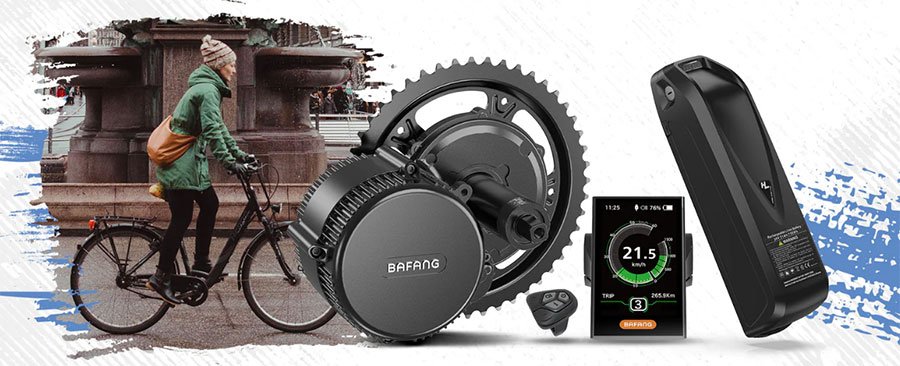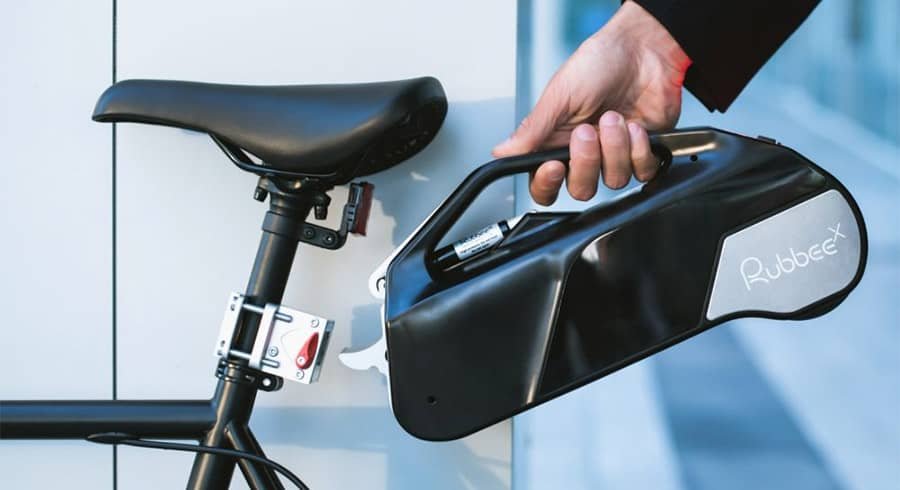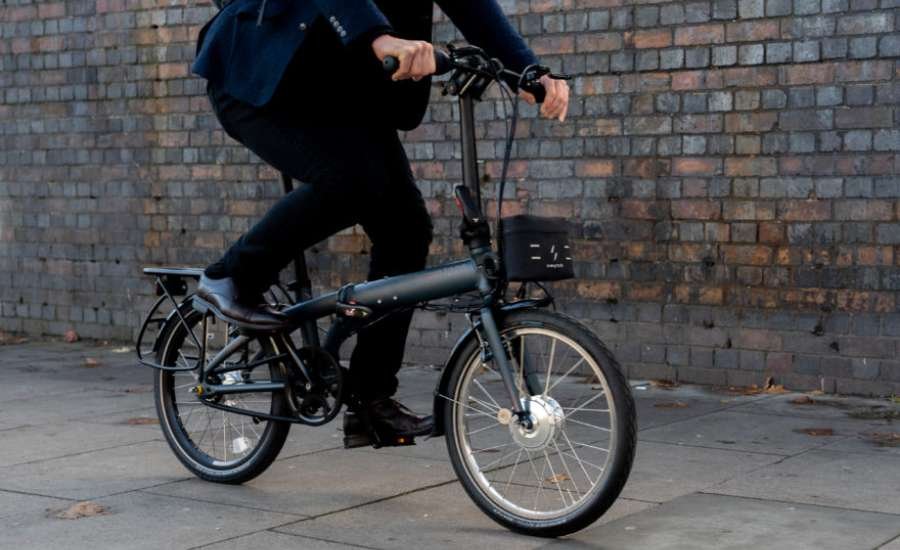As the popularity of electric bikes continues to rise, many cyclists are looking for ways to convert their traditional bicycles into electric ones. While there are many factors to consider when deciding to convert a regular bike to an electric bike, it is definitely possible with the right tools and knowledge.
In this article, we will explore the various options available for converting a regular bike into an electric bike and the pros and cons of each method. Whether you’re an experienced cyclist looking to upgrade your bike or a beginner just starting, this guide will provide you with the information you need to make an informed decision about converting your regular bike to electric.
Can You Convert Any Regular Bike to an E-bike?

In theory, most regular bikes can be converted into e-bikes. However, the ease of conversion and the quality of the end result can vary depending on factors such as the type and quality of the bike, the type of e-bike conversion kit used, and the skill level of the person performing the conversion.
It’s important to do thorough research and choose the right components for your specific bike to ensure a safe and reliable conversion. Additionally, some types of bikes may be more difficult to convert than others, and certain bike frames may not be suitable for e-bike conversion.
What Are Conversion Kits?

E-bike conversion kits are kits that can be used to convert a regular bicycle into an electric bicycle. These kits typically include an electric motor, a battery, a controller, and other necessary components such as wiring and sensors. Conversion kits come in various types and sizes, with different levels of power and features, and can be either front-wheel, rear-wheel, or mid-drive kits.
Some kits are designed for specific types of bikes, while others are more universal and can be used with a wide range of bike models. With a conversion kit, cyclists can add electric power to their existing bikes and enjoy the benefits of assisted pedaling without having to buy a completely new e-bike.
What Are the Different Types of Conversion Kits?
There are three main types of e-bike conversion kits:
#1. Front-wheel conversion kits: As the name suggests, these kits replace the front wheel of the bike with a motorized wheel. These kits are generally the easiest to install, but may affect the balance and handling of the bike.
#2. Rear wheel conversion kits: These kits replace the rear wheel of the bike with a motorized wheel. They can be a bit more complicated to install than front wheel kits but provide better balance and stability.
#3. Mid-drive conversion kits: These kits involve replacing the bike’s existing bottom bracket and crankset with a motor and controller. Mid-drive kits offer the most efficient use of power, as they allow the motor to work in conjunction with the bike’s gears, but can be more complex to install and require more mechanical know-how.
Within these three main types, there are various sizes and power levels available to suit different types of bikes and rider needs. It’s important to research and choose the right type of conversion kit that is compatible with your bike and fits your specific needs.
How Do I Convert My Regular Bike Into an Electric Bike?

Converting a regular bike to an electric bike involves several steps, and the exact process may vary depending on the type of conversion kit you choose. Here is a general overview of the steps involved:
#1. Choose a conversion kit: Research and choose the type of conversion kit that is compatible with your bike and suits your needs.
#2. Remove the bike’s wheel or crankset: Depending on the type of kit you choose, you may need to remove the bike’s front or rear wheel, or the bottom bracket and crankset.
#3. Install the motor and battery: Follow the instructions that come with your conversion kit to install the motor, battery, and other necessary components such as the controller, throttle, and wiring.
#4. Mount the wheel: If you’re using a wheel-based kit, mount the motorized wheel back onto the bike.
#5. Connect the components: Connect the motor, battery, and controller to the wiring, making sure to follow the instructions carefully and secure all connections.
#6. Test the system: Test the system to make sure everything is working properly. Adjust any settings or calibrate the system as necessary.
#7. Enjoy your new e-bike: Once everything is set up and working, you’re ready to take your newly converted e-bike out for a spin!
It’s important to note that e-bike conversion can be complex, and may require mechanical skills and tools. If you’re not confident in your ability to perform the conversion yourself, it’s recommended to seek the help of a professional bike mechanic.
Benefits of E-bike Conversion Kits?
There are several benefits of using e-bike conversion kits to convert a regular bike into an electric bike:
🟩 Cost-effectiveness: Converting a regular bike with a conversion kit is often more cost-effective than buying a new e-bike. It allows you to add electric power to your existing bike without having to purchase a whole new bike.
🟩 Environmentally Friendly: By converting your bike with an e-bike conversion kit, you are reusing and repurposing an existing bike, which is more environmentally friendly than buying a new e-bike.
🟩 Customizability: E-bike conversion kits come in different types and sizes, allowing you to choose the one that best suits your needs and preferences. You can also choose the level of power you want, and even customize the appearance of your new e-bike.
🟩 Health Benefits: While e-bikes do provide some electric assistance, you may still need to pedal to operate them. By converting your bike to an e-bike, you can enjoy the health benefits of cycling while still getting some electric assistance when needed.
🟩 Commuting Convenience: E-bikes are a convenient and efficient way to commute, especially in urban areas with heavy traffic or hills. With an e-bike conversion kit, you can turn your regular bike into a reliable and convenient mode of transportation.
Downsides of Ebike Conversion Kits?
While e-bike conversion kits have many benefits, there are also some downsides to consider:
🟥 Installation can be complex: Installing an e-bike conversion kit can be complex, especially if you’re not experienced with bike mechanics. It may require specialized tools and knowledge to properly install the kit.
🟥 Quality and reliability can vary: The quality and reliability of e-bike conversion kits can vary greatly, depending on the brand and type of kit. Some kits may be of lower quality and more prone to malfunction or breakdowns.
🟥 Warranty and support may be limited: E-bike conversion kits may not come with the same level of warranty or customer support as new e-bikes. Some kits may only have a limited warranty, and may not be eligible for repairs or replacement if they fail.
🟥 Safety concerns: Adding a motor to a regular bike can change its handling and balance, which can affect its safety. Additionally, poorly installed or low-quality kits can increase the risk of accidents or injury.
🟥 Legal considerations: Electric-powered bicycles are subject to more restrictions than regular human-powered bikes. In some areas, e-bikes with certain specifications or power levels may be considered motor vehicles and require licensing, insurance, or other legal considerations.
It’s important to carefully consider these downsides and do thorough research before deciding to convert a regular bike into an e-bike with a conversion kit.
Are Electric Bike Conversion Kits Worth It?

Whether or not e-bike conversion kits are worth it depends on individual preferences and circumstances. Here are some factors to consider:
#1. Cost: E-bike conversion kits can be more cost-effective than buying a new e-bike, but the price of a conversion kit can still be significant. Consider your budget and whether the cost of the kit is worth it for your needs.
#2. Convenience: E-bike conversion kits can be a convenient way to add electric power to an existing bike without having to buy a new one. If you already have a bike you enjoy using, a conversion kit may be a good option.
#3. Customizability: E-bike conversion kits come in different types and sizes, allowing you to choose the one that best suits your needs and preferences. This level of customizability can be appealing to some riders.
#4. Technical ability: Installing an e-bike conversion kit can be complex and may require technical skills and specialized tools. If you’re not confident in your ability to perform the installation, you may need to seek professional help, which can add to the cost.
#5. Safety: Adding a motor to a bike can change its handling and balance, which can affect its safety. It’s important to ensure that the conversion kit is installed correctly and that you follow all safety precautions.
Overall, e-bike conversion kits can be a good option for riders who want to add electric power to an existing bike or customize their e-bike experience.
How Much Does an Electric Conversion Kit Cost?
The cost of an e-bike conversion kit can vary depending on the brand, type, and quality of the kit. Typically, you can expect to spend anywhere from a few hundred to over a thousand dollars for a kit. Some basic conversion kits may start at around $200, while more high-end kits can cost over $1,500 or more.
Keep in mind that the cost of the kit is only one factor to consider when converting a regular bike to an e-bike. You may also need to purchase additional components, such as a battery and charger, which can add to the overall cost. Additionally, if you don’t have the tools or technical skills to perform the installation yourself, you may need to factor in the cost of professional installation.
Overall, the cost of an e-bike conversion kit can be a significant investment, but it may still be more cost-effective than buying a new e-bike. It’s important to do your research and consider all factors before deciding on a conversion kit that best suits your needs and budget.
Are Electric Bike Conversion Kits Legal?

The legality of electric bike conversion kits varies depending on the laws and regulations of the country, state, or city where you live. In general, electric bike conversion kits are legal as long as they comply with the laws and regulations that apply to electric bikes in your area.
In many places, electric bikes are classified into different classes based on their power output, speed, and other features. The rules for each class may differ, but in general, electric bikes are required to meet certain standards for safety, such as having a maximum power output and a maximum speed. If your electric bike conversion kit meets the applicable standards, it is likely legal to use.
However, some areas may have specific laws that regulate the use of electric bikes or require registration, licensing, or insurance. It’s important to research the laws and regulations that apply to electric bikes in your area and ensure that your electric bike conversion kit meets the applicable standards.
Additionally, it’s important to use your electric bike safely and responsibly, following all traffic laws and regulations. Riding an electric bike that does not comply with applicable laws and regulations can result in fines or other legal consequences.
Which is Better: Buying a Conversion Kit or Purchasing an Ebike?
Whether to buy a conversion kit or purchase a new e-bike depends on your personal preferences, needs, and budget. A conversion kit can be a good option if you already have a bike that you love and want to add electric assist to it.
Converting a regular bike into an e-bike can be a cost-effective way to enjoy the benefits of an e-bike without having to buy a brand-new bike. Additionally, you may have more control over the specifications of your e-bike when you convert it, such as the type of motor, battery, and other components.
However, purchasing a new e-bike can also be a good option if you want a bike that is specifically designed and built for electric assistance. New e-bikes often come with warranties, better quality components, and features that are designed to work seamlessly with the electric drive system. Additionally, you may have access to financing options or promotions that can make a new e-bike more affordable.
Ultimately, the choice between a conversion kit and a new e-bike comes down to your personal needs and preferences. If you want to upgrade your existing bike, a conversion kit may be the better option. If you are looking for a dedicated e-bike with the latest technology and features, a new e-bike may be the better choice.
FAQs
Do electric bike conversion kits work with any type of bike?
Most electric bike conversion kits can be installed on almost any type of bike, including road bikes, mountain bikes, and hybrid bikes. However, some kits may be designed for specific types of bikes or may not be compatible with certain frames.
Can I install an electric bike conversion kit myself or do I need professional help?
Some conversion kits can be installed by almost anybody, but many kits may require professional installation. It’s important to carefully read the installation instructions and assess your technical skills before attempting to install a conversion kit yourself.
Is it legal to use an electric bike conversion kit?
The legality of electric bike conversion kits may vary depending on the laws and regulations in your area. In general, as long as the converted bike meets the applicable standards and regulations for electric bikes, it is likely legal to use.
How fast and how far can an electric bike go with a conversion kit?
The speed and range of an electric bike with a conversion kit will depend on several factors, including the power output of the motor and battery capacity. Most e-bikes with conversion kits can reach speeds of 20 to 28 miles per hour and have a range of 20 to 50 miles per charge.
Can I remove the electric components and convert my e-bike back to a regular bike if I want to?
Generally speaking, it is possible to remove the electric components and convert an e-bike back to a regular bike if desired. However, this may require some technical skills and you may need to swap out the new components for the older ones.
